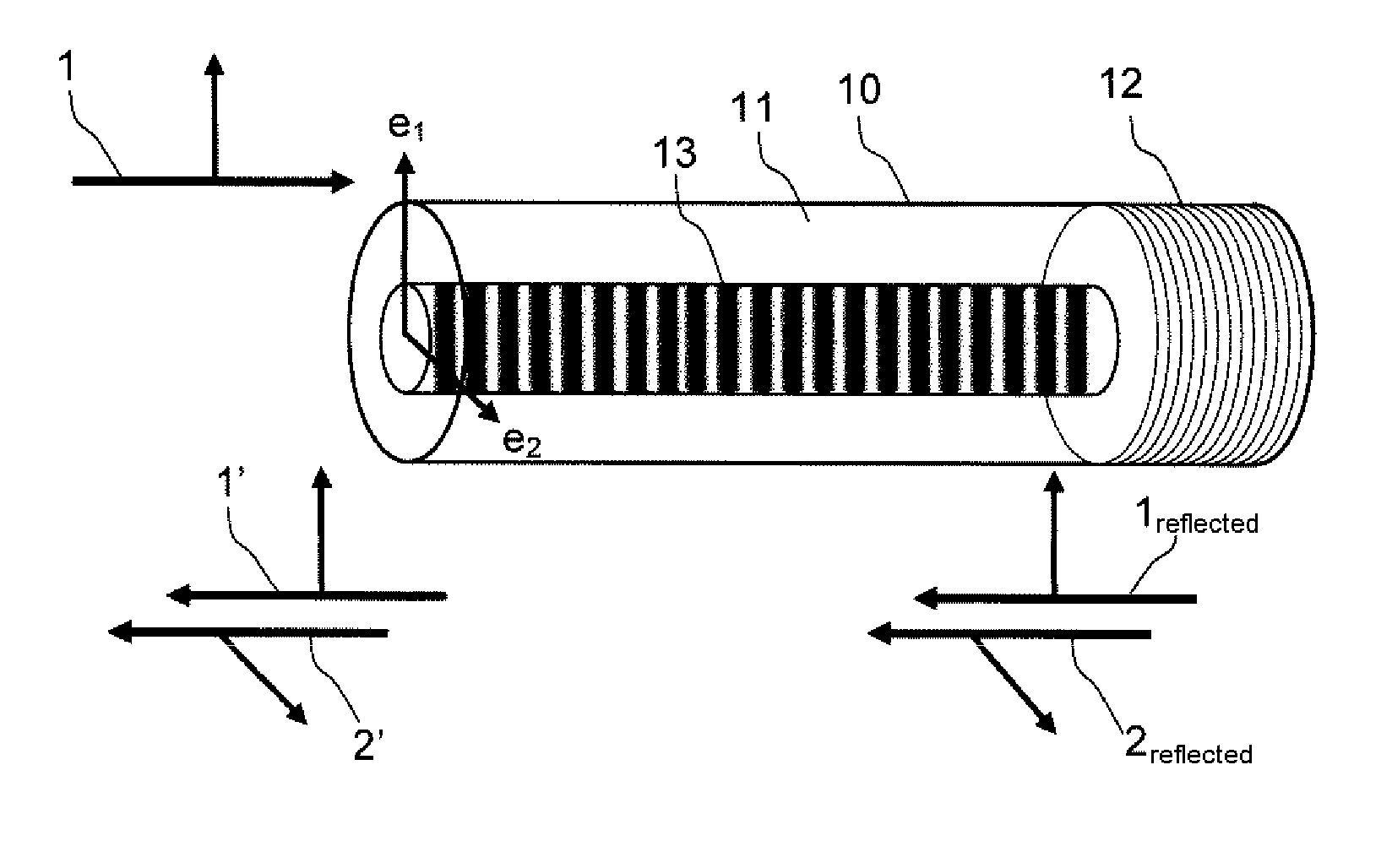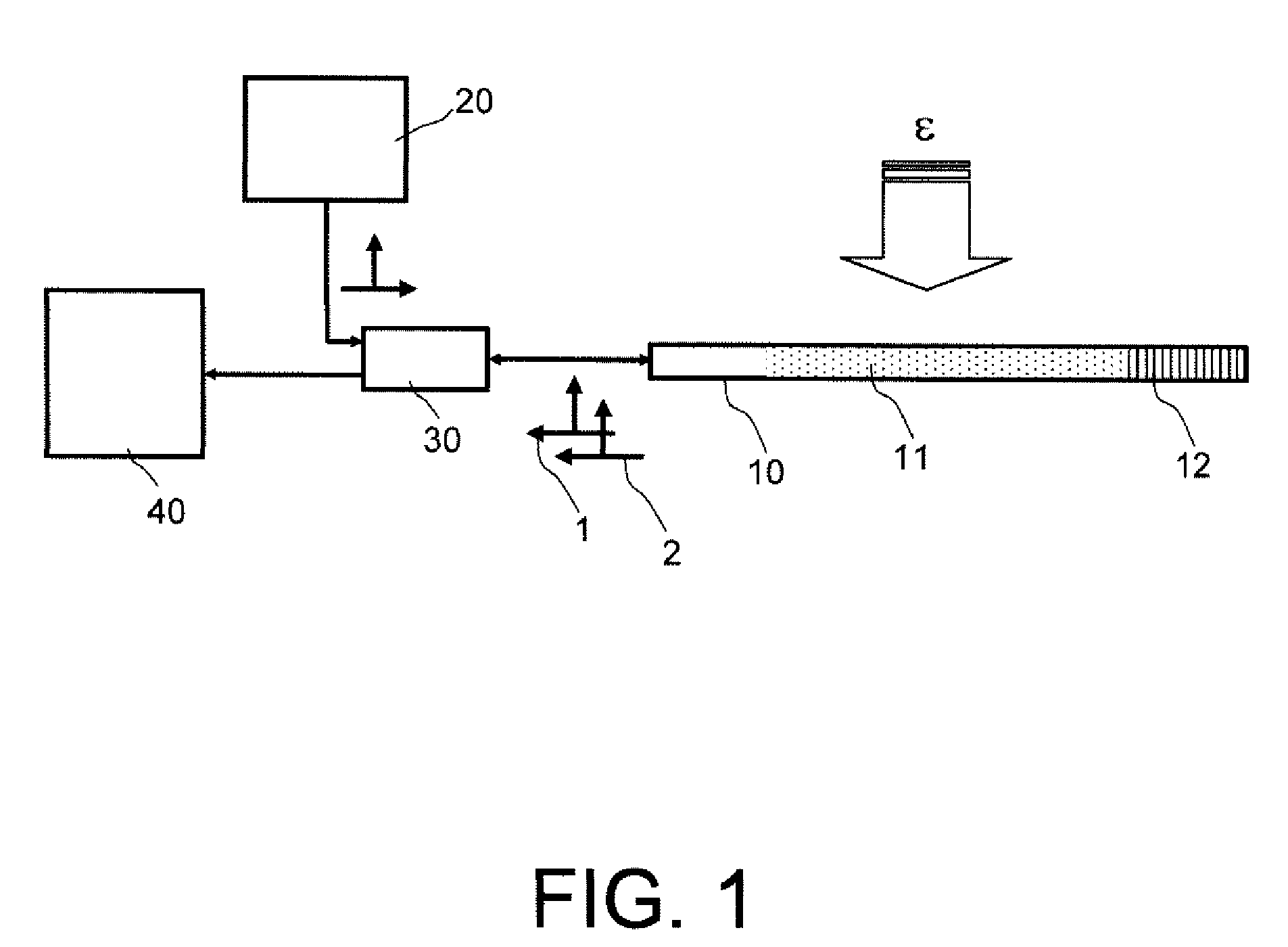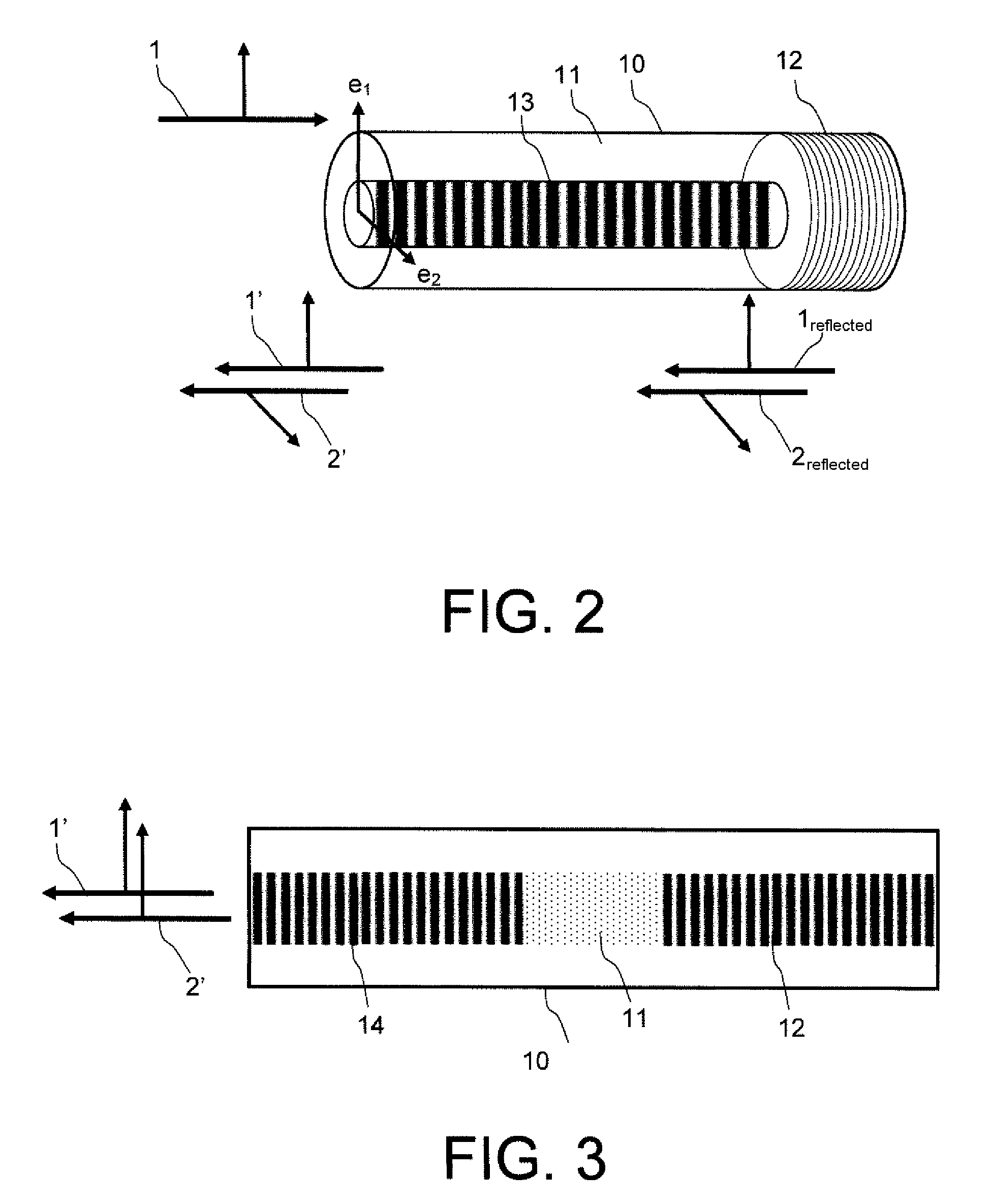Self-referenced optical fiber sensor and related sensor network
a self-referenced, optical fiber technology, applied in the field of fiberoptic sensors, can solve the problem of still complex proposed architectures
- Summary
- Abstract
- Description
- Claims
- Application Information
AI Technical Summary
Benefits of technology
Problems solved by technology
Method used
Image
Examples
first embodiment
[0048]There are various methods for generating the two optical frequencies ν1(ε) and ν2(ε). A first embodiment is derived from that described in French patent application entitled “Capteur de grandeurs physiques à fibre optique insensible aux grandeurs statiques [Fiber-optic sensor for detecting physical quantities but insensitive to static quantities]” filed under number FR 07 / 01454.
[0049]The basic principle of the physical process of mixing two waves in an amplifying medium, as described in the above application, is the following: the sensor comprises a doped optical fiber optically pumped beforehand so as to achieve population inversion between its energy levels. The fiber includes a Bragg mirror. If what is called a “probe” wave at an optical frequency:
[0050]ν1=cλ1
(in which C and λ1 represent the velocity of light and the wavelength in vacuum respectively) and of coherence length Lcoh at least equal to the length L of the fiber is injected, this wave is reflected on the Bragg mi...
second embodiment
[0072]a sensor according to the invention is based on the use of DBR lasers. One view of the fiber employing this second principle is shown in FIG. 3. To produce sensors, DFB lasers are generally used. Their use for this type of application (in particular for hydrophones) is currently expanding rapidly. DFB lasers consist of a continuous Bragg grating etched in an optical fiber amplifier, typically doped with erbium or erbium-ytterbium. They are preferred to DBR fiber lasers, formed from two Bragg gratings 12 and 14 separated by a short length 11 of a few 100 μm of fiber amplifier. This is because, in DBR geometry, the distance between the two Bragg gratings allows the oscillation of several cavity modes lying within the reflection band of the gratings. This multimodal aspect has proved to be deleterious in most hydrophone applications. However, this multimodal aspect has certain advantages in the context of the sensors according to the invention.
[0073]This is because if the fiber c...
PUM
| Property | Measurement | Unit |
|---|---|---|
| wavelength | aaaaa | aaaaa |
| wavelength | aaaaa | aaaaa |
| wavelength | aaaaa | aaaaa |
Abstract
Description
Claims
Application Information
 Login to View More
Login to View More - R&D
- Intellectual Property
- Life Sciences
- Materials
- Tech Scout
- Unparalleled Data Quality
- Higher Quality Content
- 60% Fewer Hallucinations
Browse by: Latest US Patents, China's latest patents, Technical Efficacy Thesaurus, Application Domain, Technology Topic, Popular Technical Reports.
© 2025 PatSnap. All rights reserved.Legal|Privacy policy|Modern Slavery Act Transparency Statement|Sitemap|About US| Contact US: help@patsnap.com



